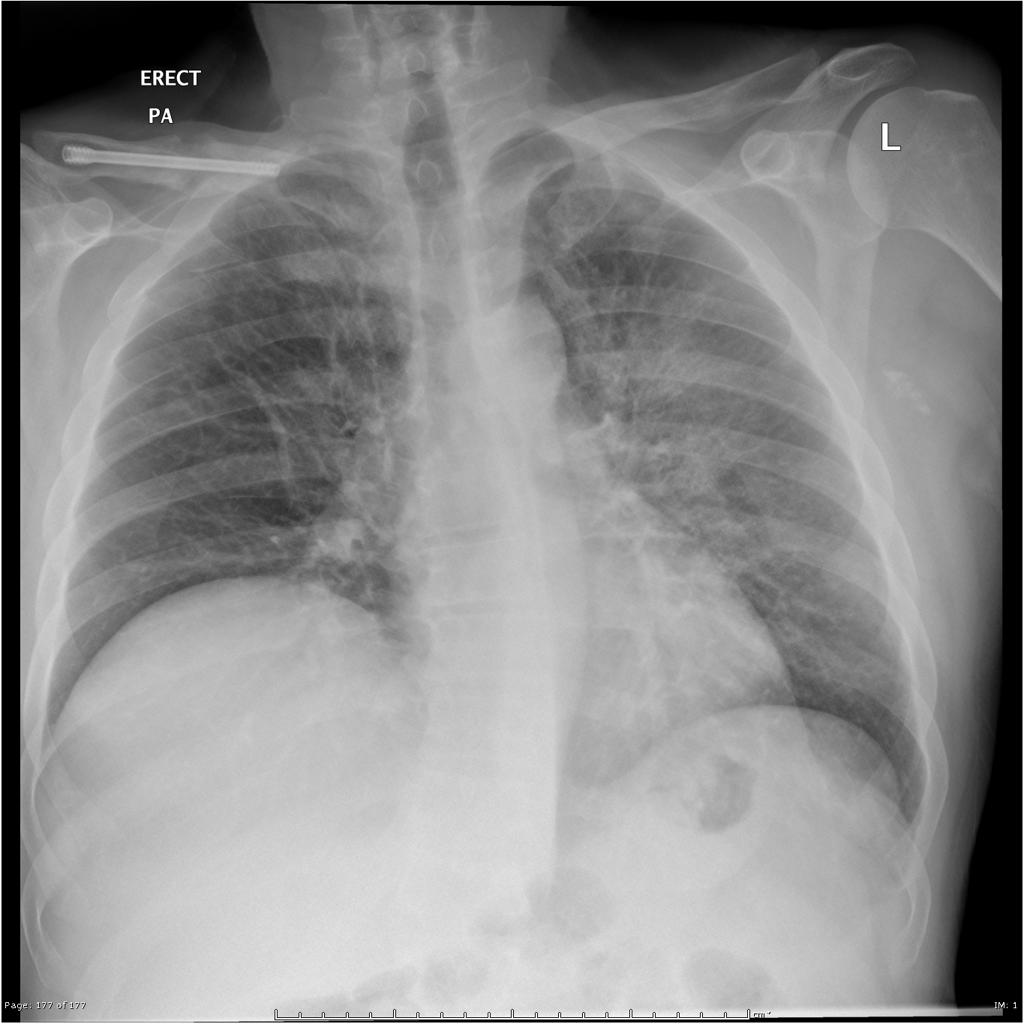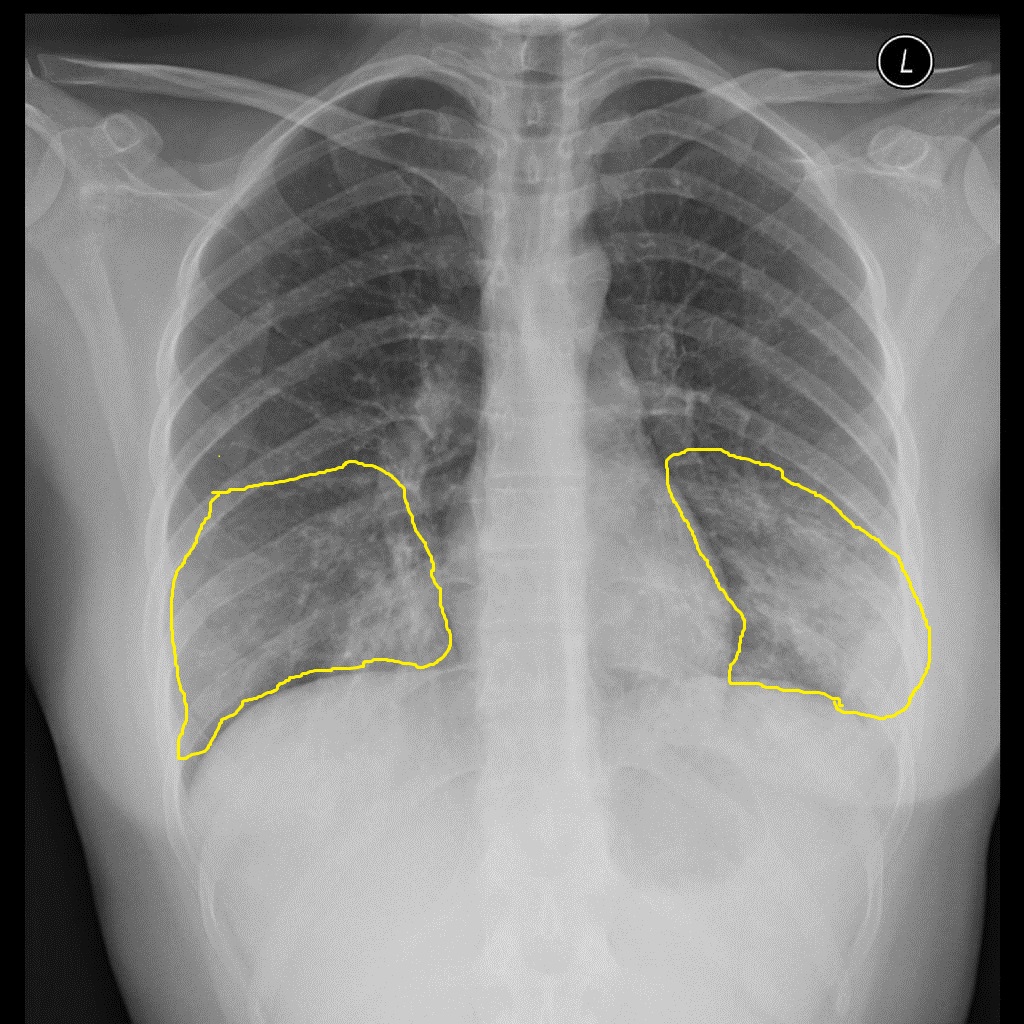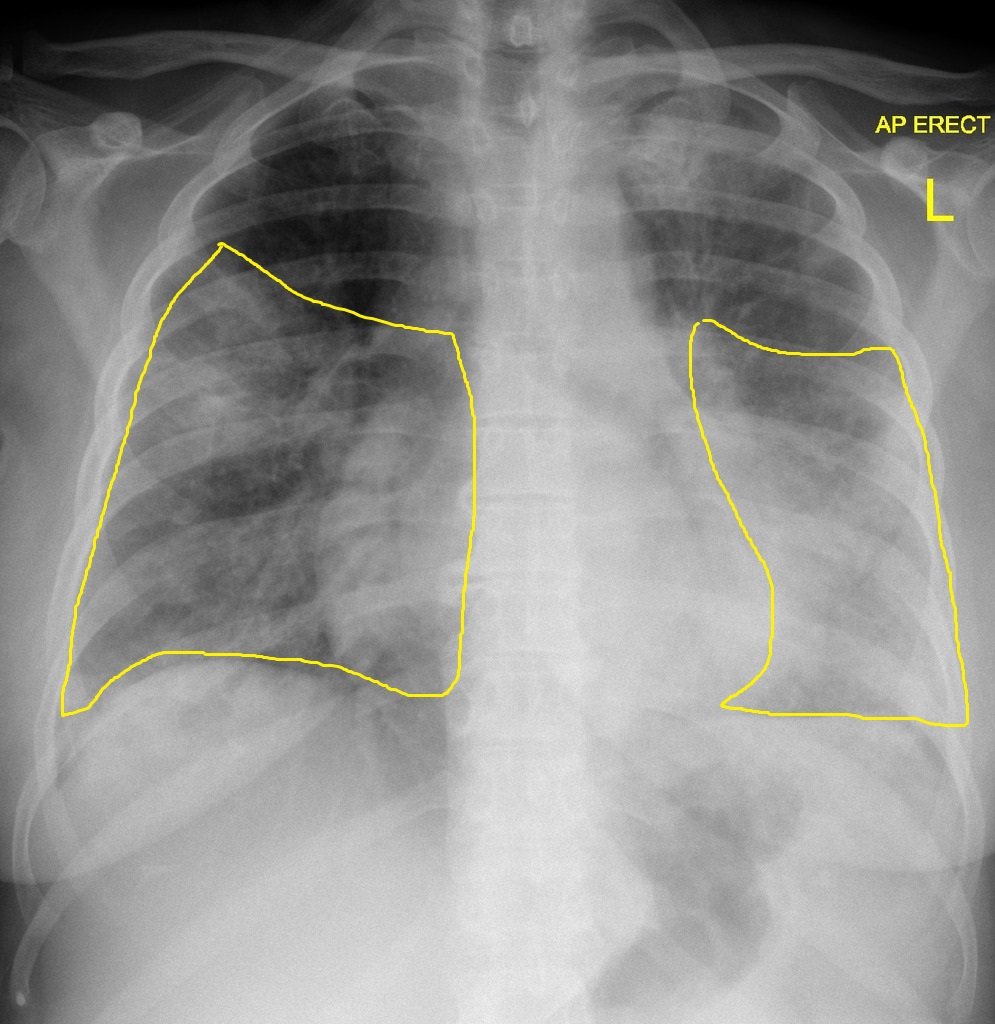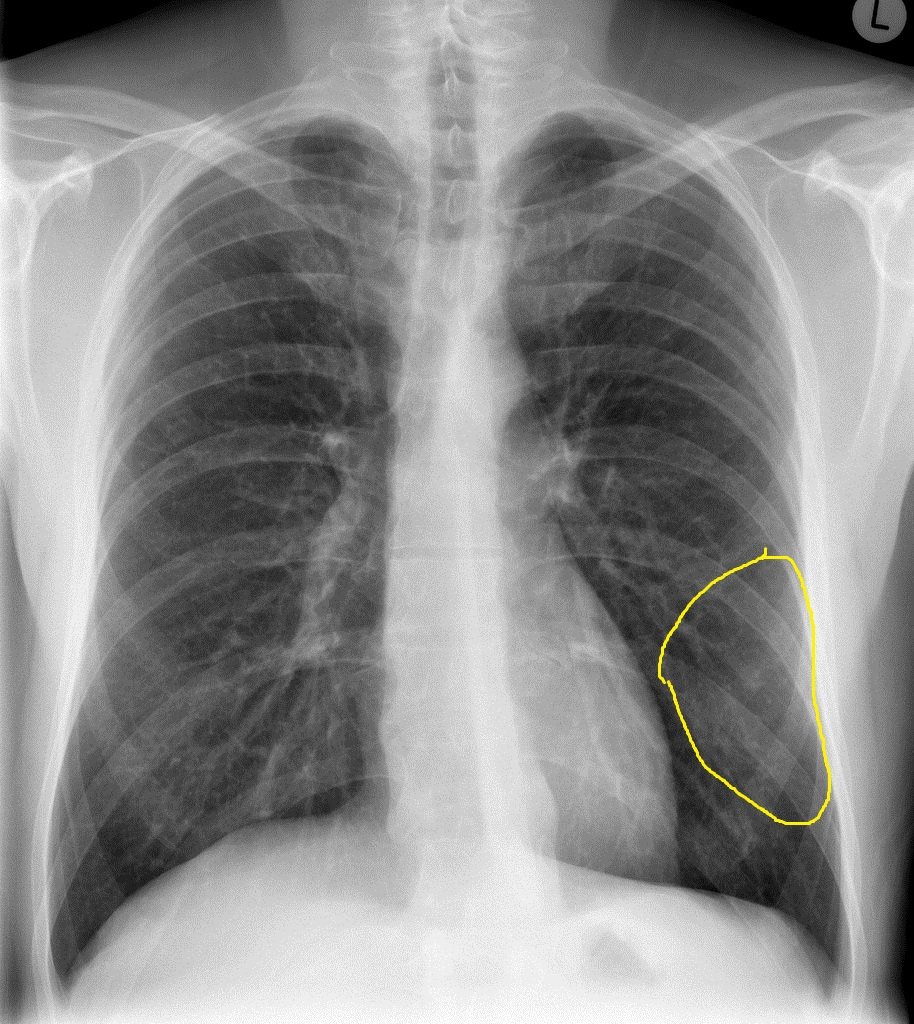Chlamydia infection differential diagnosis: Difference between revisions
No edit summary |
m (Bot: Removing from Primary care) |
||
| (14 intermediate revisions by 7 users not shown) | |||
| Line 1: | Line 1: | ||
__NOTOC__ | __NOTOC__ | ||
{{Chlamydia infection}} | {{Chlamydia infection}} | ||
{{CMG}} {{AE}} {{Maliha}} | {{CMG}}; {{AE}} {{Maliha}} | ||
==Overview== | ==Overview== | ||
Chlamydia infection must be differentiated from other genital tract infections such as [[gonorrhea]] infection, [[bacterial vaginosis]], vaginal [[candidiasis]], infection with ''[[Trichomonas vaginalis]]'', [[mycoplasma]] infection, and [[syphilis]].<ref name=abc> Genital Tract Chlamydia infection. BMJ. http://bestpractice.bmj.com/best-practice/monograph/52/diagnosis/differential.html. Accessed on December 27, 2015</ref> | |||
==Differentiating Chlamydia Infection from other diseases== | ==Differentiating Chlamydia Infection from other diseases== | ||
Chlamydia must be differentiated from other genital tract infections such as: | Chlamydia infection must be differentiated from other genital tract infections such as:<ref name=abc> Genital Tract Chlamydia infection. BMJ. http://bestpractice.bmj.com/best-practice/monograph/52/diagnosis/differential.html. Accessed on December 27, 2015</ref> | ||
*[[Gonorrhea]] infection | *[[Gonorrhea]] infection | ||
*[[Bacterial vaginosis]] | *[[Bacterial vaginosis]] | ||
| Line 11: | Line 13: | ||
*Infection with ''[[Trichomonas vaginalis]]'' | *Infection with ''[[Trichomonas vaginalis]]'' | ||
*[[Mycoplasma]] infection | *[[Mycoplasma]] infection | ||
*[[Syphilis]] | |||
Chlamydia pneumopnia must be differentiated from other diseases that cause [[atypical pneumonia]] such as Q fever and legionella pneumonia: | |||
{| class="wikitable" | |||
!Disease | |||
!Prominent clinical features | |||
!Lab findings | |||
!Chest X-ray | |||
|- | |||
|Q fever | |||
| | |||
* Q fever is characterized by abrupt onset of [[fever]], [[myalgia]], [[headache]], and other constitutional symptoms. | |||
* [[Cough]] is the most prominent respiratory symptom and it is usually dry.<ref name="pmid23422417">{{cite journal |vauthors=Irfan M, Farooqi J, Hasan R |title=Community-acquired pneumonia |journal=Curr Opin Pulm Med |volume=19 |issue=3 |pages=198–208 |year=2013 |pmid=23422417 |doi=10.1097/MCP.0b013e32835f1d12 |url=}}</ref> | |||
* [[Cough]] is associated with [[dyspnea]] and [[pleuritic chest pain]]. | |||
| | |||
* [[Antibody]] detection using [[Immunofluorescence|indirect immunofluorescence]] (IIF) is the preferred method for diagnosis. | |||
* [[Polymerase chain reaction|PCR]] can be used if IIF is negative, or very early once disease is suspected. | |||
* [[Coxiella burnetii|''C. burnetii'']] does not grow on ordinary blood cultures, but can be cultivated on special media such as embryonated eggs or cell culture. | |||
* A two-to-three fold increase in [[Aspartate transaminase|AST]] and [[ALT]] is seen in most patients. | |||
| | |||
[[Image:Q fever.gif|center|300px|thumb|Q fever pneumonia - - Case courtesy of Royal Melbourne Hospital Respiratory, Radiopaedia.org, rID 21993 ]] | |||
|- | |||
|[[mycoplasma pneumonia|''Mycoplasma'' pneumonia]] | |||
| | |||
* [[mycoplasma pneumonia|''Mycoplasma'' pneumonia]] can be [[asymptomatic]]. | |||
* [[Headache]], [[Nausea and vomiting|nausea]], and [[malaise]] usually precede the onset of symptoms.<ref name="pmid23422417">{{cite journal |vauthors=Irfan M, Farooqi J, Hasan R |title=Community-acquired pneumonia |journal=Curr Opin Pulm Med |volume=19 |issue=3 |pages=198–208 |year=2013 |pmid=23422417 |doi=10.1097/MCP.0b013e32835f1d12 |url=}}</ref> | |||
* [[Cough]] is intractable and nonproductive. | |||
| | |||
* Postitve [[Coombs test]] | |||
* [[Leukocytosis]] | |||
* [[Thrombocytosis]] | |||
| | |||
[[Image:Atypical-pneumonia-mycoplasma - Case courtesy of Dr Alborz Jahangiri, Radiopaedia.org, rID 45781.jpg|center|300px|thumb|Mycoplasma pneumonia - Case courtesy of Dr Alborz Jahangiri, Radiopaedia.org, rID 45781]] | |||
|- | |||
|[[Legionellosis]] | |||
| | |||
* [[Legionellosis]] is characterized by cough that is slightly productive.<ref name="pmid23422417">{{cite journal |vauthors=Irfan M, Farooqi J, Hasan R |title=Community-acquired pneumonia |journal=Curr Opin Pulm Med |volume=19 |issue=3 |pages=198–208 |year=2013 |pmid=23422417 |doi=10.1097/MCP.0b013e32835f1d12 |url=}}</ref> | |||
* Constitutional symptoms such as [[chills]], [[myalgia]], and [[arthralgia]]. | |||
* Gastrointestinal symptoms such as [[diarrhea]], [[nausea]], and [[vomiting]]. | |||
| | |||
* Labs are nonspecific for diagnosing [[legionellosis]] | |||
* [[Renal dysfunction|Renal]] and [[hepatic dysfunction]] | |||
* [[Thrombocytopenia]] and [[leukocytosis]] | |||
* [[Hyponatremia]] | |||
| | |||
[[Image:Legionella-pneumonia - Case courtesy of Dr Henry Knipe, Radiopaedia.org, rID 31816.jpg|center|300px|thumb|Legionella pneumonia - Case courtesy of Dr Henry Knipe, Radiopaedia.org, rID 31816 ]] | |||
|- | |||
|[[Chlamydia pneumonia]] | |||
| | |||
* There are no specific clinical features of [[chlamydia pneumonia]]. | |||
* Symptoms appear gradually. | |||
* [[Chlamydia infection]] is usually associated with [[upper respiratory tract]] symptoms ([[pharyngitis]], [[sinusitis]], etc). | |||
* It might be associated with extrapulmonary maifestations such as [[meningitis]] and [[Guillain-Barre syndrome]].<ref name="pmid23422417">{{cite journal |vauthors=Irfan M, Farooqi J, Hasan R |title=Community-acquired pneumonia |journal=Curr Opin Pulm Med |volume=19 |issue=3 |pages=198–208 |year=2013 |pmid=23422417 |doi=10.1097/MCP.0b013e32835f1d12 |url=}}</ref> | |||
| | |||
* [[Chlamydia pneumonia]] is usually associated with normal [[WBC|WBC count.]] | |||
* Diagnosed with the presence of [[Antibody|antichlamydial antibody]] (through [[complement fixation]] or direct immunofluoroscence) or direct antigen detection. | |||
| | |||
[[Image:Chlamydia-pneumonia - Case courtesy of Dr Andrew Dixon, Radiopaedia.org, rID 14567.jpg|center|300px|thumb|Chlamydia-pneumonia - Case courtesy of Dr Andrew Dixon, Radiopaedia.org, rID 14567]] | |||
|} | |||
==References== | ==References== | ||
{{Reflist|2}} | {{Reflist|2}} | ||
{{WikiDoc Help Menu}} | |||
{{WikiDoc Sources}} | |||
[[Category:Gynecology]] | [[Category:Gynecology]] | ||
[[Category:FinalQCRequired]] | |||
[[Category:Emergency medicine]] | |||
[[Category:Disease]] | [[Category:Disease]] | ||
[[Category: | [[Category:Up-To-Date]] | ||
[[Category:Infectious disease]] | |||
[[Category:Urology]] | |||
Latest revision as of 20:54, 29 July 2020
|
Chlamydia infection Microchapters |
|
Diagnosis |
|
Treatment |
|
Case Studies |
|
Chlamydia infection differential diagnosis On the Web |
|
American Roentgen Ray Society Images of Chlamydia infection differential diagnosis |
|
Risk calculators and risk factors for Chlamydia infection differential diagnosis |
Editor-In-Chief: C. Michael Gibson, M.S., M.D. [1]; Associate Editor(s)-in-Chief: Maliha Shakil, M.D. [2]
Overview
Chlamydia infection must be differentiated from other genital tract infections such as gonorrhea infection, bacterial vaginosis, vaginal candidiasis, infection with Trichomonas vaginalis, mycoplasma infection, and syphilis.[1]
Differentiating Chlamydia Infection from other diseases
Chlamydia infection must be differentiated from other genital tract infections such as:[1]
- Gonorrhea infection
- Bacterial vaginosis
- Vaginal candidiasis
- Infection with Trichomonas vaginalis
- Mycoplasma infection
- Syphilis
Chlamydia pneumopnia must be differentiated from other diseases that cause atypical pneumonia such as Q fever and legionella pneumonia:
| Disease | Prominent clinical features | Lab findings | Chest X-ray |
|---|---|---|---|
| Q fever |
|
 | |
| Mycoplasma pneumonia |
|
|
 |
| Legionellosis |
|
|
 |
| Chlamydia pneumonia |
|
|
 |
References
- ↑ 1.0 1.1 Genital Tract Chlamydia infection. BMJ. http://bestpractice.bmj.com/best-practice/monograph/52/diagnosis/differential.html. Accessed on December 27, 2015
- ↑ 2.0 2.1 2.2 2.3 Irfan M, Farooqi J, Hasan R (2013). "Community-acquired pneumonia". Curr Opin Pulm Med. 19 (3): 198–208. doi:10.1097/MCP.0b013e32835f1d12. PMID 23422417.